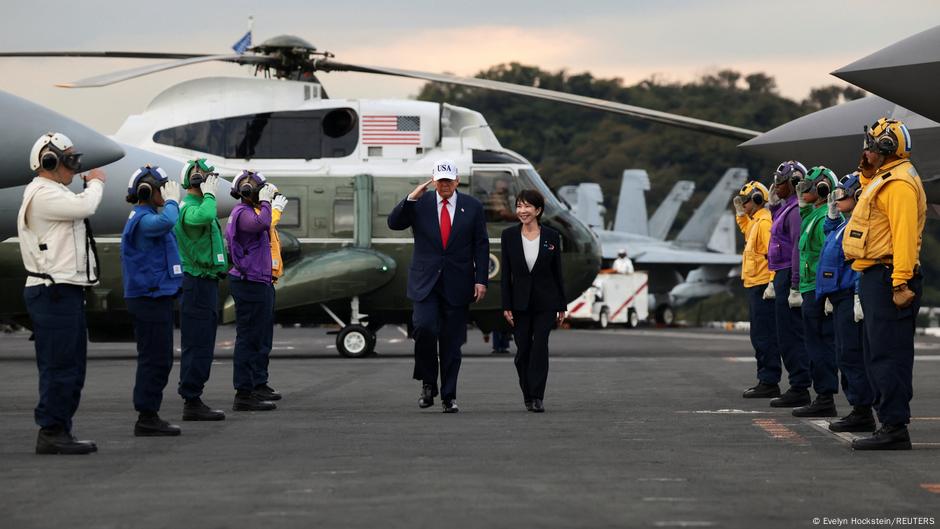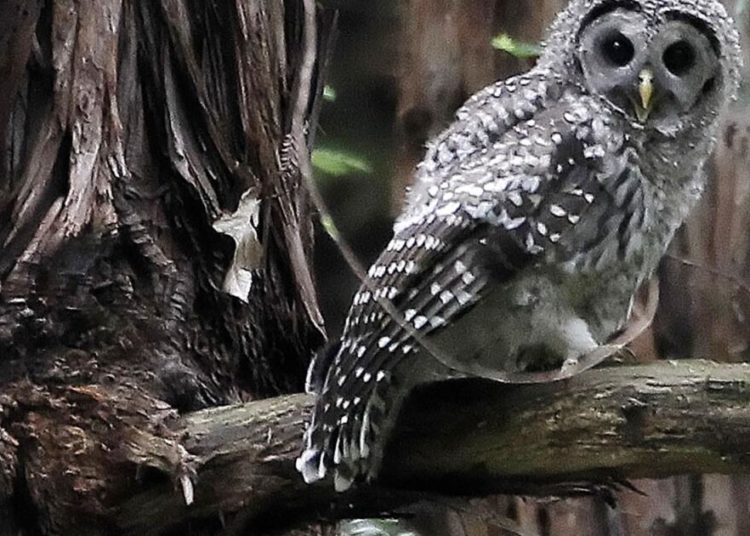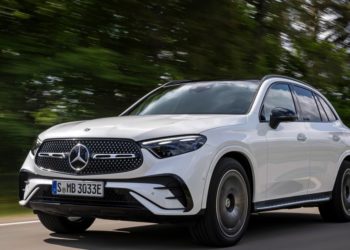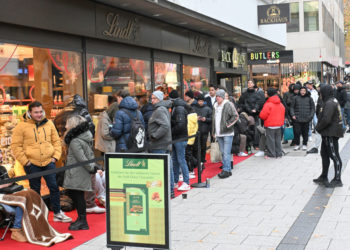On Tuesday, US President Donald Trump and Japanese Prime Minister Sanae Takaichi on the horizon for the US-Japan alliance.
Japan was the second stop for the US president that is set to culminate on Thursday in talks with Chinese President on the sidelines of a in .
In Japan, Trump used his visit to the US’s closest ally in East Asia to demonstrate strength ahead of his much-anticipated meeting with Xi.
Trump and Takaichi signed an agreement on strategically important raw materials, and published a list of joint projects in energy, , and critical technologies.
The two leaders also appeared together on the nuclear-powered USS George Washington aircraft carrier in Yokohama harbor.
Speaking to US Marines, Takaichi called for a “free and open” Indo-Pacific as the basis for US-Japanese strategic cooperation.
“No one has our weapons, and very soon our country will be even stronger and more powerful than ever before,” Trump declared, before concluding with a small dance to the song “YMCA,” reminiscent of his presidential campaign.
Conservative bedfellows
Takaichi left no stone unturned in her efforts to establish a good relationship with Trump during their first face-to-face meeting.
The 64-year-old Takaichi also played off her close ties with Japan’s former Prime Minister Shinzo Abe. Trump also praised Takaichi several times for becoming Japan’s first female prime minister.
Abe, who was , was a close friend of Trump during his first term in office, and Trump still holds his memory in high esteem today.
The nationalist Abe was Takaichi’s mentor, and she sees herself as his political heir. At her first meeting with Trump, she presented him with Abe’s golf putter as a gift, as the two had played golf together several times. Takaichi clearly wanted to transfer Trump’s positive feelings for Abe to herself.
Other small gestures were intended to show that Japan has picked up on the tone coming from Trump’s administration. At lunch, Trump and Takaichi were served American risotto rice and a steak made from US beef.
The meal was intended to serve as a symbol of Japan’s desire to import more US agricultural products, and Trump had specifically requested for more rice and beef purchases.
Japan also offered to buy more soybeans and natural gas from the US, as well as a fleet of US pickup trucks.
US-Japan ‘allies at strongest level’
Takaichi praised Trump’s role in securing , and between Israel and Hamas. These were “unprecedented” achievements. According to the White House, Takaichi will also nominate Trump for the .
The conservative politician had already worked on making a good impression on Trump in the run-up to his visit.
On Friday, Takaichi announced in parliament that Japan would increase defense spending to 2% of economic output in the fiscal year ending in March. Previously, Japan had planned to reach this target only in 2027.
Trump promptly praised Japan for increasing its military capabilities “very significantly,” adding that the US has already received Japanese orders “for a very large quantity of new military equipment.”
Delivery of the long-awaited US missiles for F-35 fighter jets, which Japan has long awaited. is due to begin this week.
At the same time, Trump assured Japan of US strategic support, which he had called into question during his first presidency by implying that Japan needs to share more of the costs of stationing US troops there.
“We are allies at the strongest level,” Trump said in Tokyo.
New deals
In addition to the many mutual compliments, Trump and Takaichi also signed a cooperation agreement for strategically important raw materials.
Under the plan, the private sector is being mobilized to reduce its dependence on China for these raw materials, which are needed for the manufacture of electronics, semiconductors, batteries, wind turbines, and weapons.
US Secretary of Commerce Howard Lutnick and Japan’s new minister of economy and industry, Ryosei Akazawa, already met in Tokyo on Sunday. During the summer, they were involved in , under which Japan will invest $550 billion in potential projects in the US.
has indicated his administration will “invest as we like,” and decide how the money will be spent, and in return, the president retroactively lowered US import tariffs on Japanese goods to 15% at the beginning of August.
The Takaichi administration is now trying to ensure that the billions are also invested for the benefit of . This is another reason why Takaichi made such an effort during this visit to win Trump’s trust and goodwill.
This article has been translated from German
The post US and Japan signal solidarity ahead of Trump-Xi talks appeared first on Deutsche Welle.




